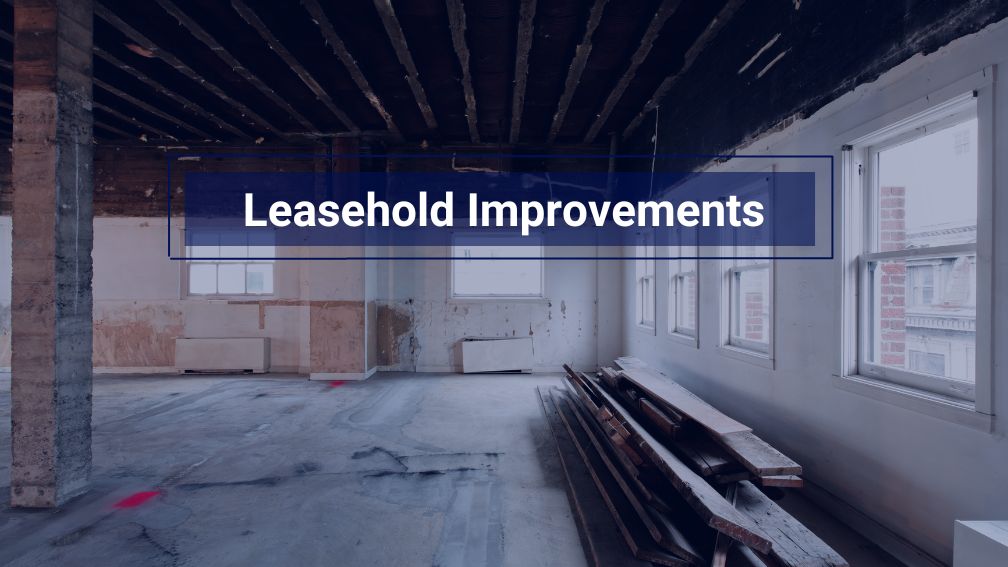
Leasehold improvements can play a vital role in making a leased space functional and inviting for a tenant’s operations. Without proper accounting, businesses could face challenges with compliance with ASC 842. In this blog post, we’ll explore the details of leasehold improvements and best practices for accounting for these improvements for commercial property.
Leasehold improvements refer to changes made to a leased space by a tenant to make it more functional or aesthetically pleasing. These improvements also known as tenant improvement allowance accounting can range from installing new lighting or flooring to building out custom office spaces or conference rooms. In most cases, leasehold improvements are the responsibility of the tenant, not the landlord or property owners and are agreed upon during lease negotiations. Examples include:
However, It’s important to note that not all improvements will necessarily qualify as leasehold improvements. To be considered a leasehold improvement, the asset must meet certain criteria as outlined by ASC 842. Under ASC 842, to be considered a leasehold improvement, the asset must meet all the following criteria:
To determine if an asset qualifies as a leasehold improvement under ASC 842, you may want to ask the following questions and consult with relevant parties, like the real estate, leasing agent, landlord, and legal teams:
Under the ASC 842 lease accounting standard, it is important to properly account for leasehold improvements in order to accurately report on the financial impact of the lease.
Here are some key considerations for leasehold improvements under ASC 842:
Leasehold improvements that meet the following criteria should be capitalized:
Leasehold improvements that meet the capitalization criteria should be initially measured at their fair value as of the lease commencement date. This includes both direct costs (such as construction costs) and indirect costs (such as project management fees).
After initial measurement, leasehold improvements should be amortized over the shorter of the remaining lease term or depreciated over the useful life of the improvement. The amortization expense should be recognized in the income statement and the carrying amount of the leasehold improvement should be included in the corresponding asset account.
If changes are made to the leasehold improvement during the lease term, the carrying amount should be adjusted accordingly. This includes both additions and removals of leasehold improvements.
ASC 842 requires disclosure of leasehold improvement information in the financial statements like the balance sheet and income statement . This includes a description of the improvement, the cost, the useful life, and the amortization expense recognized during the reporting period.
Calculating the amortization expense for leasehold improvements requires determining the useful life of the improvement and the total cost. The useful life can be estimated based on the expected duration of the lease, as well as any legal or contractual restrictions on the use of the improvement. The total cost includes the cost of the improvement itself, as well as any related expenses, such as installation or demolition costs.
To calculate the annual amortization expense, divide the total cost by the useful life of the improvement. For example, if a tenant installs leasehold improvements with a total cost of $100,000 and a useful life of 10 years, the annual amortization expense would be $10,000 per year.
Let’s assume a company enters into a lease agreement with a landlord for a retail space. The lease agreement requires the company to perform leasehold improvements to the space before opening for business. The lease term is 10 years, and the total cost of the leasehold improvements is $100,000.
Under ASC 842, the company will need to determine whether the leasehold improvements qualify as a separate lease component. If the leasehold improvements are considered to be a separate lease component, the company will need to allocate the cost of the leasehold improvements to the lease term and record them separately from the lease liability.
Assuming the leasehold improvements are considered a separate lease component and the lease term is 10 years, the annual amortization expense will be $10,000 ($100,000/10 years).
The journal entry for recording the leasehold improvements under ASC 842 would be:
Debit Leasehold Improvements $100,000
Credit Lease Liability $100,000
To record the annual amortization expense, the journal entry would be:
Debit Amortization Expense $10,000
Credit Leasehold Improvements $10,000
It’s important to note that the actual calculations and journal entries may vary depending on the specific circumstances and details of the lease agreement and the company’s accounting policies and practices. It’s recommended to consult with a qualified accounting professional for guidance on leasehold improvements accounting under ASC 842.
To ensure compliance with lease accounting standards and accurate financial reporting, it’s important to follow best practices for accounting for leasehold improvements. These include:
By following these best practices, businesses can ensure that their accounting for leasehold improvements is accurate, transparent, and compliant with all applicable standards.
Leasehold improvements are an important part of many leased spaces, and proper accounting is essential for compliance and accurate financial reporting. By understanding ASC 842, calculating amortization expense correctly, and following best practices for accounting, businesses can ensure that they are maintaining compliance with lease accounting standards and accurately reflecting their leasehold improvement costs in their financial statements.
Lease Accounting Software by Occupier automates the necessary leasehold improvement calculations to ensure your lease portfolio and financial statements are always in compliance under the ASC 842 standard.